Kenneth E Peterson
age ~68
from Sun City West, AZ
- Also known as:
-
- Kenneth E Petersen
- Kennethe Peterson
- Kenneth Epeterson
- Kenneth E
Kenneth Peterson Phones & Addresses
- Sun City West, AZ
- Buckeye, AZ
- 722 Daniel Boone Dr, Green River, WY 82935 • 3078755447
- 2807 Driftwood Ln, Rock Springs, WY 82901 • 3073826111
- Carbondale, IL
- Mountain View, WY
- Maricopa, AZ
Medicine Doctors

Dr. Kenneth B Peterson, Scottsdale AZ - MD (Doctor of Medicine)
view sourceSpecialties:
Internal Medicine
Address:
9501 E Shea Blvd, Scottsdale, AZ 85260
4806270965 (Phone)
8209 E Del Campo Dr, Scottsdale, AZ 85258
6023160251 (Phone)
4806270965 (Phone)
8209 E Del Campo Dr, Scottsdale, AZ 85258
6023160251 (Phone)
Certifications:
Internal Medicine, 1986
Awards:
Healthgrades Honor Roll
Languages:
English
Education:
Medical School
University Of Arizona
Medical School
Banner Good Samaritan Medical Center
University Of Arizona
Medical School
Banner Good Samaritan Medical Center

Kenneth B. Peterson
view sourceSpecialties:
Family Medicine, Sports Medicine
Work:
VA Black Hills Health Care System
113 Comanche Rd, Fort Meade, SD 57741
6053472511 (phone), 6057207171 (fax)
113 Comanche Rd, Fort Meade, SD 57741
6053472511 (phone), 6057207171 (fax)
Education:
Medical School
University of South Dakota Sanford School of Medicine
Graduated: 1980
University of South Dakota Sanford School of Medicine
Graduated: 1980
Procedures:
Cardiac Stress Test
Pulmonary Function Tests
Pulmonary Function Tests
Conditions:
Osteoarthritis
Peripheral Nerve Disorders
Anxiety Dissociative and Somatoform Disorders
Anxiety Phobic Disorders
Burns
Peripheral Nerve Disorders
Anxiety Dissociative and Somatoform Disorders
Anxiety Phobic Disorders
Burns
Languages:
English
Description:
Dr. Peterson graduated from the University of South Dakota Sanford School of Medicine in 1980. He works in Fort Meade, SD and specializes in Family Medicine and Sports Medicine. Dr. Peterson is affiliated with VA Black Hills Healthcare System.

Kenneth B. Peterson
view sourceSpecialties:
Internal Medicine
Work:
Kenneth B Peterson MD
8209 E Del Campo Dr, Scottsdale, AZ 85258
6023160251 (phone)
8209 E Del Campo Dr, Scottsdale, AZ 85258
6023160251 (phone)
Education:
Medical School
University of Arizona College of Medicine at Tucson
Graduated: 1982
University of Arizona College of Medicine at Tucson
Graduated: 1982
Languages:
English
Spanish
Spanish
Description:
Dr. Peterson graduated from the University of Arizona College of Medicine at Tucson in 1982. He works in Scottsdale, AZ and specializes in Internal Medicine.

Kenneth D. Peterson
view sourceSpecialties:
Chiropractor
Work:
Peterson Clinic
1002 W Elm Ave, Hermiston, OR 97838
5415676277 (phone), 5415679055 (fax)
1002 W Elm Ave, Hermiston, OR 97838
5415676277 (phone), 5415679055 (fax)
Languages:
English
Description:
Dr. Peterson works in Hermiston, OR and specializes in Chiropractor.

Kenneth S. Peterson
view sourceSpecialties:
Family Medicine
Work:
UMass Memorial Medical GroupPlumley Village Health Services
116 Belmont St RM 11, Worcester, MA 01605
5083341102 (phone), 5087951739 (fax)
116 Belmont St RM 11, Worcester, MA 01605
5083341102 (phone), 5087951739 (fax)
Languages:
English
Spanish
Spanish
Description:
Mr. Peterson works in Worcester, MA and specializes in Family Medicine. Mr. Peterson is affiliated with UMASS Memorial Medical Center.
Us Patents
-
Method And Beam Stepping Apparatus For A Satellite Cellular Communication System
view source -
US Patent:57397848, Apr 14, 1998
-
Filed:Nov 20, 1995
-
Appl. No.:8/560605
-
Inventors:Yih Guang Jan - Phoenix AZ
Kenneth Maynard Peterson - Phoenix AZ -
Assignee:Motorola, Inc. - Schaumburg IL
-
International Classification:H04B 7185
-
US Classification:342354
-
Abstract:In a satellite cellular communication system (10), a phased array antenna (41) includes a dynamic beamformer (50) that provides individual antenna beams (35) within which communications with subscriber units (26) take place. The satellites (12) are located in several orbits (14). As the satellites move with respect to Earth's surface, each of the antenna beams is stepped backward (104) to compensate for the satellites movement. After each satellite travels a distance equal to a predetermined portion of the satellites' spacing in the orbit, each satellite's antenna beams are stepped forward (116) to replace the previous satellite's footprint. Accordingly, cell-to-cell hand-off is not required for subscriber units communicating within an antenna beam.
-
Method Of Predicting Cell-To-Cell Hand-Offs For A Satellite Cellular Communications System
view source -
US Patent:51612488, Nov 3, 1992
-
Filed:Oct 2, 1989
-
Appl. No.:7/415815
-
Inventors:Bary R. Bertiger - Scottsdale AZ
Raymond J. Leopold - Colorado Springs CO
Kenneth M. Peterson - Phoenix AZ -
Assignee:Motorola, Inc. - Schaumburg IL
-
International Classification:H04B 7185
-
US Classification:455 17
-
Abstract:A method of predicting cell-to-cell hand-offs of mobile subscribers for a satellite cellular communications system. Each satellite of a constellation projects a number of beams or cells upon the earth for communication with mobile subscribers. The satellite transfers (hand-offs) communications links from cell to cell as the satellite moves over the mobile subscriber. Since the movement of the satellite is stabilized in three directions, the projection of the beams or cells follows a predictable path across the face of the earth. Each satellite moves across the earth in one direction. Once a subscriber is located within one cell, the next cell to which the mobile subscriber is handed-off may be determined from the geographic position. For mobile users which are close to boundaries between cells, additional position location may be determined by the calculation of bit error rates. The results of these bit error rate measurements then indicate the identity of the cell which is to receive the hand-off of the mobile user.
-
Statistically Robust Traffic Modeling Method And Apparatus
view source -
US Patent:55949401, Jan 14, 1997
-
Filed:Dec 22, 1994
-
Appl. No.:8/361402
-
Inventors:Kenneth M. Peterson - Phoenix AZ
Victor H. Cutler - Mesa AZ
Gerald J. Davieau - Eldersburg MD -
Assignee:Motorola, Inc. - Schaumburg IL
-
International Classification:H04Q 700
-
US Classification:455 121
-
Abstract:A method and apparatus for controlling communication channel access in a communication system (10) determines channel allocations (106) which represent limits on communication channel access and conforms operations of the system (10) to the channel allocations. The channel allocations are determined by dividing a surface which emanates signals from communication units (26) into elemental areas, collecting past traffic data (102) describing past communication channel usage by the communication units (26) located in the elemental areas, generating a traffic model (104) for a future time interval based on the past traffic data, and determining the channel allocations (106) based on the traffic model.
-
Satellite Cellular Telephone And Data Communication System
view source -
US Patent:54107288, Apr 25, 1995
-
Filed:Apr 21, 1993
-
Appl. No.:8/050753
-
Inventors:Bary R. Bertiger - Scottsdale AZ
Raymond J. Leopold - Chandler AZ
Kenneth M. Peterson - Tempe AZ -
Assignee:Motorola, Inc. - Schaumburg IL
-
International Classification:H04B 7185
H04M 1100 -
US Classification:455 131
-
Abstract:A system for facilitating global cellular/trunked mobile communication is disclosed. This system permits communication with hand held and mobile mounted cellular telephones. The system permits two-way communications anywhere on or above the earth up to a particular height above the earth of several hundred nautical miles. The system employs a number of low-earth orbiting satellites moving about the earth in orbit. Links are provided from the satellites directly to the users and via the public switched telephone network to other users. The satellites are interconnected via links in a ring structure surrounding the earth. Switching is performed by each of the satellites. In addition, each of the satellites hands off a call as it moves out of the range of a particular user.
-
Air Interface Statistical Multiplexing In Communication Systems
view source -
US Patent:61816841, Jan 30, 2001
-
Filed:Feb 2, 1998
-
Appl. No.:9/017157
-
Inventors:Randy Lee Turcotte - Tempe AZ
Kenneth Maynard Peterson - Phoenix AZ -
Assignee:Motorola, Inc. - Schaumburg IL
-
International Classification:H04J 322
-
US Classification:370332
-
Abstract:Methods (600, 700), an access controller (350), and a communication system (300) for optimizing utilization of a wireless communication link in a limited bandwidth communication system or network are provided. Statistical multiplexing is achieved by partitioning a wireless communication link (240) into multiple communication channels (250) and assigning communication sources (220) to communicate information over an air interface for a predetermined time interval, where the number of communication sources (220) assigned to the communication channels (250) during a particular time interval exceeds the number of available communication channels (250). The methods (600, 700), access controller (350), and communication system (300) disclosed also allow a system operator to provide varying levels of quality of service (QoS) guarantees in a communication system or network using statistical multiplexing by designating varying levels of QoS among the communication channels (250).
-
Satellite System Cell Management
view source -
US Patent:52278026, Jul 13, 1993
-
Filed:Dec 23, 1991
-
Appl. No.:7/812389
-
Inventors:Michele A. Pullman - Phoenix AZ
Kenneth M. Peterson - Phoenix AZ -
Assignee:Motorola, Inc. - Schaumburg IL
-
International Classification:H04B 7185
H04B 719 -
US Classification:342352
-
Abstract:There is provided a method and means for controlling the amount of overlap and gaps in coverage of antenna pattern cells of a moving satellite communication system, by determining the relative spatial location of overlapping or gaping cells of converging or diverging satellites as a function of time; determining a point where antenna coverage of one or more cells from a first moving satellite will overlap or gap one or more cells from a second satellite; and turning off or on one or more of the overlapping or gaping cells so as to eliminate interference therebetween without leaving substantial coverage gaps between adjacent antenna patterns.
-
Method And Apparatus For Load Sharing In A Satellite Communication System
view source -
US Patent:56258682, Apr 29, 1997
-
Filed:Nov 3, 1995
-
Appl. No.:8/553083
-
Inventors:Yih G. Jan - Phoenix AZ
Kenneth M. Peterson - Phoenix AZ -
Assignee:Motorola, Inc. - Schaumburg IL
-
International Classification:H04B 7185
-
US Classification:455 134
-
Abstract:In a satellite cellular communication system, subscriber traffic is shared between satellites whose antenna coverage patterns overlap during some portion of their orbit. When the power consumption of one satellite exceeds a predetermined level, subscriber units are transferred to cells of a second satellite whose antenna coverage pattern overlaps that of the first satellite. After the subscriber units are transferred, channel assignments are redone to prevent interference with subscriber units in other cells.
-
Method And Apparatus For Laser Communication Through A Lossy Medium
view source -
US Patent:60439203, Mar 28, 2000
-
Filed:Aug 4, 1997
-
Appl. No.:8/905760
-
Inventors:Raymond Joseph Leopold - Tempe AZ
Kenneth Maynard Peterson - Phoenix AZ
Keith Andrew Olds - Mesa AZ -
Assignee:Motorola, Inc. - Schaumburg IL
-
International Classification:H04B 1004
-
US Classification:359184
-
Abstract:A laser transmitter (200, 300) includes a femptosecond pulse forming circuit (214, 308) and an ultra high-speed optical switch (218, 304) which enable the transmitter (200, 300) to generate a modulated pulse stream having pulses with widths of under 200 femptoseconds. The transmitted pulse stream is processed by a laser detector (500), including a wideband optical detector (504) and pulse stretching circuit (506), that regenerates information included in the modulated pulse stream.
Name / Title
Company / Classification
Phones & Addresses
Director
Norelco Cabinets Ltd
Kitchen Cabinets & Equipment. Cabinets. Cabinet Maker. Cabinet Hardware. Kitchen Planning & Remodelling. Kitchen & Bath Design
Kitchen Cabinets & Equipment. Cabinets. Cabinet Maker. Cabinet Hardware. Kitchen Planning & Remodelling. Kitchen & Bath Design
205 Adams Rd, Kelowna, BC V1X 7R1
2507652121, 2507651540
2507652121, 2507651540
Secretary
Beaver Home Improvements Ltd.
Beaver Home Improvements Ltd.
Contractors-Alteration & Renovation. Siding. Patio Equipment & Supplies. Windows - Installation/Service. Contractors - Framing. Roofing Contractors
Beaver Home Improvements Ltd.
Contractors-Alteration & Renovation. Siding. Patio Equipment & Supplies. Windows - Installation/Service. Contractors - Framing. Roofing Contractors
9685 Agur St, Summerland, BC V0H 1Z2
7785165779, 7785165667
7785165779, 7785165667
Manager
Travel Executives Inc
Security Brokers, Dealers, and Flotation Comp...
Security Brokers, Dealers, and Flotation Comp...
6045 N Scottsdale Rd, Scottsdale, AZ 85250
Desert Sunrise Realty
Real Estate Agents and Managers
Real Estate Agents and Managers
851 N Country Club Dr, Mesa, AZ 85201
Director
Norelco Cabinets Ltd
Kitchen Cabinets & Equipment · Cabinets · Cabinet Maker · Cabinet Hardware · Kitchen Planning & Remodelling · Kitchen & Bath Design
Kitchen Cabinets & Equipment · Cabinets · Cabinet Maker · Cabinet Hardware · Kitchen Planning & Remodelling · Kitchen & Bath Design
2507652121, 2507651540
Manager
Travel Executives Inc
Security Brokers and Dealers · Employment Agencies
Security Brokers and Dealers · Employment Agencies
6045 N Scottsdale Rd, Scottsdale, AZ 85250
4804748000, 4809481991
4804748000, 4809481991
CEO, Chairman
Velocity M.M. Corp
3370 NE 190 St, Miami, FL 33180
382 NE 191 St, Miami, FL 33179
14463 N 28 Way, Phoenix, AZ 85032
382 NE 191 St, Miami, FL 33179
14463 N 28 Way, Phoenix, AZ 85032
Secretary
Beaver Home Improvements Ltd
Contractors-Alteration & Renovation · Siding · Patio Equipment & Supplies · Windows - Installation/Service · Contractors - Framing · Roofing Contractors
Contractors-Alteration & Renovation · Siding · Patio Equipment & Supplies · Windows - Installation/Service · Contractors - Framing · Roofing Contractors
7785165779, 7785165667
Resumes

Kenneth Peterson
view source
Kenneth Peterson
view source
Kenneth Peterson
view source
Kenneth Peterson
view source
Kenneth Margaret Peterson
view source
Kenneth Peterson
view source
Kenneth Peterson
view source
Kenneth Peterson
view sourceLicense Records
Kenneth W Peterson
License #:
27247 - Expired
Issued Date:
Mar 6, 2009
Renew Date:
Jun 1, 2012
Expiration Date:
Nov 30, 2013
Type:
Certified Public Accountant
Lawyers & Attorneys

Kenneth D. Peterson - Lawyer
view sourceLicenses:
Montana - Active 1967

Kenneth Peterson - Lawyer
view sourceSpecialties:
General
ISLN:
904469781
Admitted:
1980
University:
Walla Walla College, A.B.
Law School:
Willamette University, J.D.

Kenneth Peterson - Lawyer
view sourceSpecialties:
Complex Tort Litigation
Product Liability Defense
National Product Liability Program Management
Tort Class Action
Environmental & Toxic Tort Litigation
Construction Litigation
Insurance Coverage Litigation
Commercial Litigation
Contracts
Breach of Warranty
Creditors' Rights
Transactional Assistance
Alternative Dispute Resolution
Negotiation
Mediation
Arbitration
Labor & Employment Law
Discrimination, Harassment, Retaliation, Whistleblower & Other Employment Law Matters
Wage & Hour Compliance & Litigation
Trade Secrets & Unfair Competition Advice & Litigation
Workplace Investigations
Training Programs
Transportation
Appellate Practice
Automotive & Automotive Components
Consumer Products
Professional Services
Personal Injury
Product Liability Defense
National Product Liability Program Management
Tort Class Action
Environmental & Toxic Tort Litigation
Construction Litigation
Insurance Coverage Litigation
Commercial Litigation
Contracts
Breach of Warranty
Creditors' Rights
Transactional Assistance
Alternative Dispute Resolution
Negotiation
Mediation
Arbitration
Labor & Employment Law
Discrimination, Harassment, Retaliation, Whistleblower & Other Employment Law Matters
Wage & Hour Compliance & Litigation
Trade Secrets & Unfair Competition Advice & Litigation
Workplace Investigations
Training Programs
Transportation
Appellate Practice
Automotive & Automotive Components
Consumer Products
Professional Services
Personal Injury
ISLN:
904469828
Admitted:
1982
University:
Northwestern University, B.S.
Law School:
Georgetown University Law Center, J.D., 1982

Kenneth Peterson - Lawyer
view sourceISLN:
904469811
Admitted:
1972
University:
University of Illinois, B.A., 1968
Law School:
University of Illinois, J.D., 1972

Kenneth Peterson - Lawyer
view sourceSpecialties:
Worker's Compensation
ISLN:
904469804
Admitted:
1975
University:
Stanford University, A.B., 1971
Law School:
Hastings College of the Law, University of California, J.D., 1975
Googleplus

Kenneth Peterson
Work:
Writers Of The Chosen - Owner/boss

Kenneth “Theonlykcp” Pete...

Kenneth Peterson
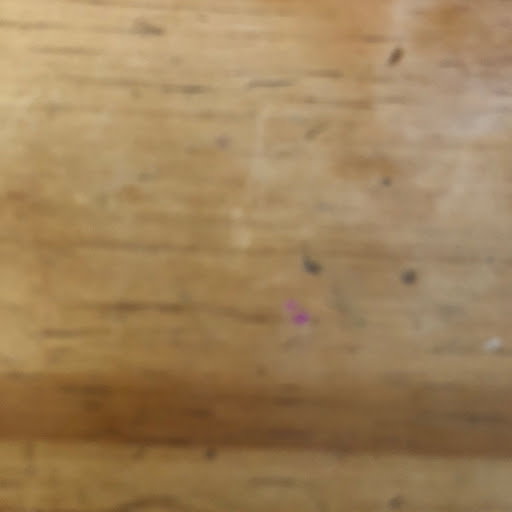
Kenneth Peterson

Kenneth Peterson

Kenneth Peterson
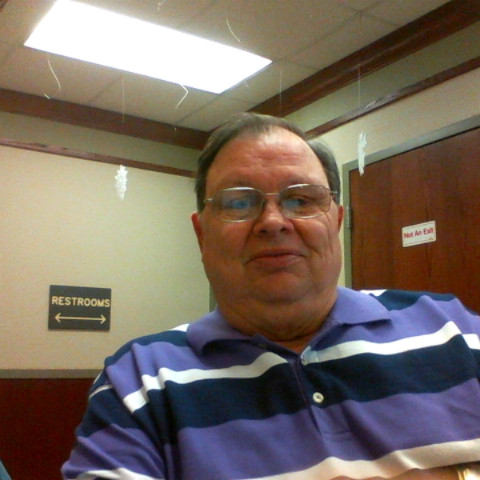
Kenneth Peterson

Kenneth Peterson
Flickr
Youtube
Myspace
Plaxo

Kenneth W. Peterson
view sourcePresident at The Primacy Club LLC

Kenneth Peterson
view sourcemy

Kenneth Peterson
view sourceQuality Mortgage Lending
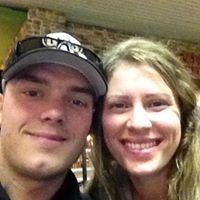
Kenneth Dusty Peterson
view source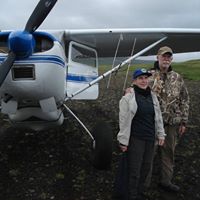
Kenneth A Peterson
view source
Kenneth Lewis Peterson
view source
Kenneth Peterson
view source
Kenneth Peterson
view source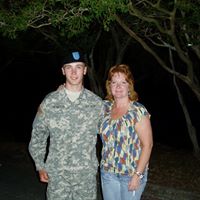
Kenneth D Peterson
view source
Kenneth Charles Peterson
view source
Kenneth Douglas Peterson
view sourceClassmates

Kenneth Peterson, Darby H...
view source
Kenneth Peterson | Blacks...
view source
kenneth peterson | North ...
view source
Kenneth Peterson, Mass Hi...
view source
Kenneth Peterson | Bowlin...
view source
Kenneth Peterson, Eden Hi...
view source
Kenneth Peterson | Baypor...
view source
Kenneth Peterson, Carlmon...
view sourceGet Report for Kenneth E Peterson from Sun City West, AZ, age ~68


















